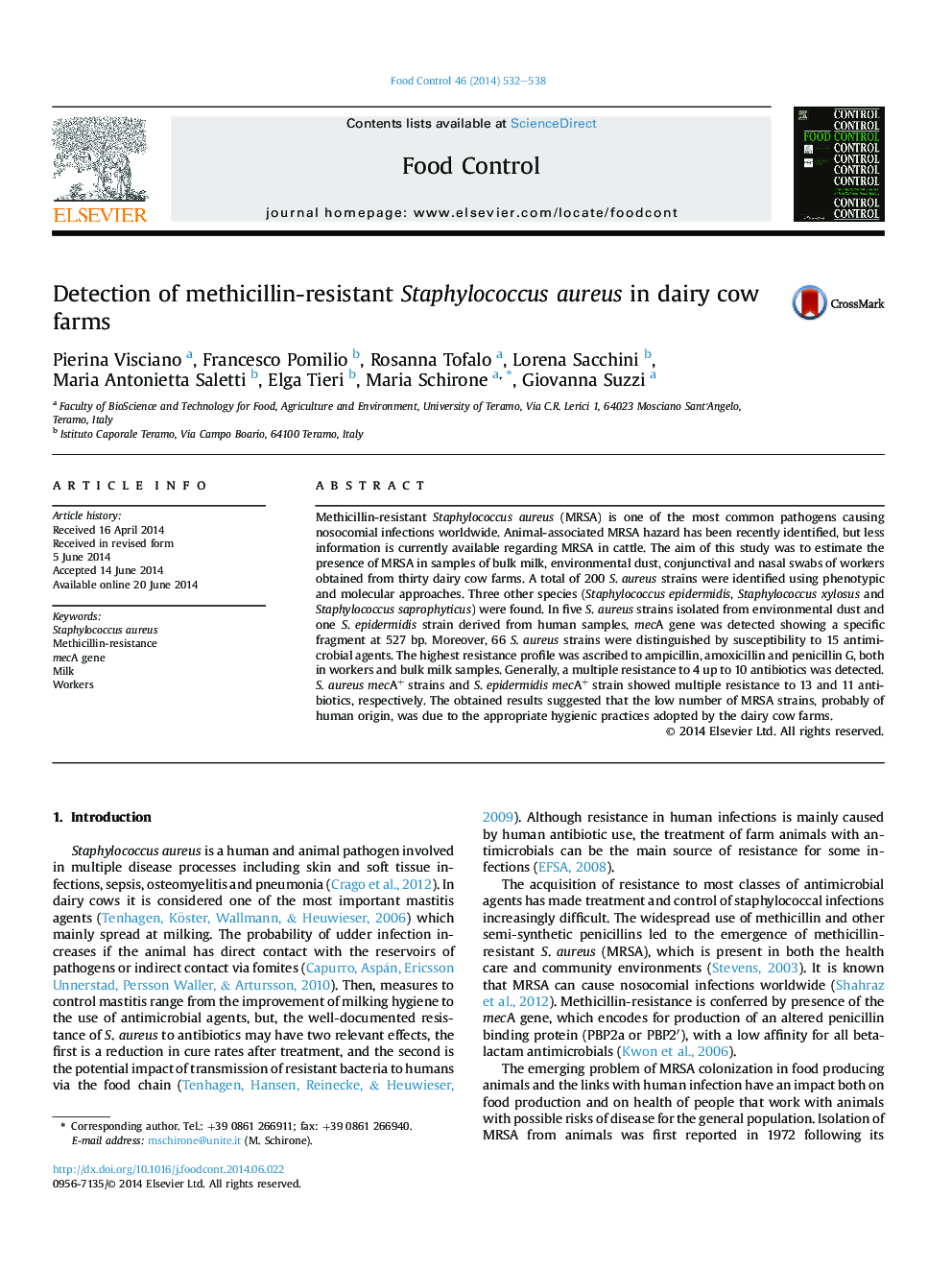| Article ID | Journal | Published Year | Pages | File Type |
|---|---|---|---|---|
| 6391301 | Food Control | 2014 | 7 Pages |
â¢Methicillin-resistant Staphylococcus aureus investigated in thirty dairy cow farms.â¢mecA gene detected in five Staphylococcus aureus strains from environmental dust.â¢A multiple resistance revealed towards four up ten antimicrobial agents.
Methicillin-resistant Staphylococcus aureus (MRSA) is one of the most common pathogens causing nosocomial infections worldwide. Animal-associated MRSA hazard has been recently identified, but less information is currently available regarding MRSA in cattle. The aim of this study was to estimate the presence of MRSA in samples of bulk milk, environmental dust, conjunctival and nasal swabs of workers obtained from thirty dairy cow farms. A total of 200 S. aureus strains were identified using phenotypic and molecular approaches. Three other species (Staphylococcus epidermidis, Staphylococcus xylosus and Staphylococcus saprophyticus) were found. In five S. aureus strains isolated from environmental dust and one S. epidermidis strain derived from human samples, mecA gene was detected showing a specific fragment at 527 bp. Moreover, 66 S. aureus strains were distinguished by susceptibility to 15 antimicrobial agents. The highest resistance profile was ascribed to ampicillin, amoxicillin and penicillin G, both in workers and bulk milk samples. Generally, a multiple resistance to 4 up to 10 antibiotics was detected. S. aureus mecA+ strains and S. epidermidis mecA+ strain showed multiple resistance to 13 and 11 antibiotics, respectively. The obtained results suggested that the low number of MRSA strains, probably of human origin, was due to the appropriate hygienic practices adopted by the dairy cow farms.
